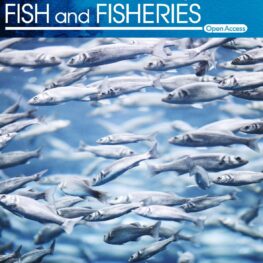Categories
Fisheries Publications 2021Effect of Different Hydrocolloids on the Quality Criteria of Fish Fingers during Frozen Storage
Abdelrahman S. Talab* and Mahamed Abou-Taleb
Fisheries Division – Fish Processing and Technology Lab (NIOF)
Egyptian Journal of Aquatic Biology & Fisheries, 25(4): 323 – 335 (2021)
(Indexed in Scopus)
Abstract:
The effect of some hydrocolloids on the quality of common carp fish fingers were evaluated during frozen storage for six months. Sodium alginate (ALG), carrageenan (CGN), hydroxyl propyl methylcellulose (HPMC), xanthan gum (XG), and chitosan (CH) were used as additives (5g/kg) in common carp fish fingers, and the proximate composition and physical, chemical, microbiological, and sensory properties were evaluated at regular intervals in common carp fish fingers. The results showed that, the moisture, protein, lipid, and ash of minced common carp fish samples, raw common carp fish fingers, and pre-fried common carp fish fingers were 75.15, 18.55%, 4.01%, and 4.30; 71.80%, 17.75%, 2.56%, and 5.90%, and 66.29%, 17.30%, 5.95%, and 6.28%, respectively. The changes in chemical composition between fresh common carp fish, fish fingers, and pre-fried fish fingers were found significant (P< 0.05). The values of pH, total volatile basic nitrogen, trimethylamine, thibarbituric acid total bacterial count, psychrophilic bacteria, and yeast & molds counts increased significantly during the storage period, but the values were within the acceptable limits. Organoleptic evaluation revealed that, the different added hydrocolloids didn’t significantly affect the flavor of common carp fish fingers, while chitosan and carrageenan improved the taste, textures, and appearance of common carp fish fingers significantly in comparison to the control and other trails. In conclusion, different types of fish fingers were acceptable even at the end of the storage period; also, different hydrocolloids were effective in retaining the quality properties of treated fish fingers and showed better performance than the control.
Keywords: Fish fingers, Alginate, Carrageenan, Hydroxypropyl methylcellulose, Xanthan, Chitosan
Corresponding author e-mail: [email protected]






